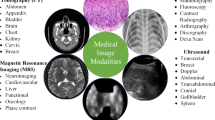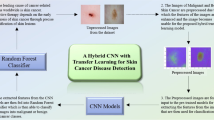Abstract
The human body’s largest organ is the skin which covers the entire body. The facial skin is one area of the body that needs careful handling. It can cause several facial skin diseases like acne, eczema, moles, melanoma, rosacea, and many other fungal infections. Diagnosing these diseases has been difficult due to challenges like the high cost of medical equipment and the lack of medical competence. However, various existing systems are utilized to detect the type of facial skin disease, but those approaches are time-consuming and inaccurate to detect the disease at early stages. To address various issues, a deep learning-based gate recurrent unit (GRU) has been developed. Non-linear diffusion is used to acquire and pre-process raw pictures, adaptive histogram equalization (AHE) and high boost filtering (HBF). The image noise is removed by using non-linear diffusion. The contrast of the image is maximized using AHE. The image’s edges are sharpened by using HBF. After pre-processing, textural and colour features are extracted by applying a grey level run-length matrix (GLRM) and chromatic co-occurrence local binary pattern (CCoLBP). Then, appropriate features are selected using horse herd optimization (HOA). Finally, selected features are classified using GRU to identify the types of facial skin disease. The proposed model is investigated using the Kaggle database that consists of different face skin disease images such as rosacea, eczema, basal cell carcinoma, acnitic keratosis, and acne. Further, the acquired dataset is split into training and testing. Considering the investigation’s findings, the proposed method yields 98.2% accuracy, 1.8% error, 97.1% precision, and 95.5% f1-score. In comparison to other current techniques, the proposed technique performs better. The created model is, therefore, the best choice for classifying the various facial skin conditions.













Similar content being viewed by others
Availability of Data and Materials
Not applicable.
Code Availability
Not applicable.
References
Miot HA, de Oliveira Penna G, Ramos AM, Penna ML, Schmidt SM, Luz FB, Sousa MA, Palma SL, Junior JA: Profile of dermatological consultations in Brazil (2018). Anais brasileiros de dermatologia 93(6):916–28, 2018.
Perumal Sankar S, Viswanath N, Jer Lang H, Karthick S: An Effective Content Based Medical Image Retrieval by Using ABC based Artificial Neural Network (ANN). Current Medical Imaging Reviews 13(3):223–230, 2017.
Lim CH, Son MJ, Kim MH: A Study on Facial Skin Disease Recognition Using Multi-Label Classification. KIPS Transactions on Software and Data Engineering 10(12):555–60, 2021.
Narayanan SJ, Jaiswal PR, Chowdhury A, Joseph AM, Ambar S: A Computational Intelligence Approach for Skin Disease Identification Using Machine/Deep Learning Algorithms. Computational Intelligence and Healthcare Informatics 269–95, 2021.
Ahmad F, Hariharan U, Karthick S, Pawar VE, Sharon Priya S: Optimized Lung Nodule Prediction Model for Lung Cancer Using Contour Features Extraction. Optical Memory and Neural Networks 32(2):126–136, 2023.
Hardi SM, Siregar DP: Diagnosis of Facial Skin Disease in Expert System Using Fuzzy Sugeno Method. InJournal of Physics: Conference Series 1898(1):012021, 2021, IOP Publishing.
Manage DM, Alahakoon AI, Weerathunga K, Weeratunga T, Lunugalage D, De Silva H: Deep Transfer Learning Approach for Facial and Verbal Disease Detection. In2021 3rd International Conference on Advancements in Computing (ICAC) 317–322, 2021. IEEE.
Karthick S, Muthukumaran N: Deep Regression Network for Single-Image Super-Resolution Based on Down- and Upsampling with RCA Blocks. National Academy Science Letters, 2023. https://doi.org/10.1007/s40009-023-01353-5
Tsuchida K, Kobayashi M: Oxidative stress in human facial skin observed by ultraweak photon emission imaging and its correlation with biophysical properties of skin. Scientific Reports 10(1):9626, 2020.
Karunanayake RK, Dananjaya WM, Peiris MY, Gunatileka BR, Lokuliyana S, Kuruppu A: CURETO: skin diseases detection using image processing and CNN. In2020 14th international conference on Innovations in Information Technology (IIT) 1–6, 2020. IEEE.
Ahmad B, Usama M, Huang CM, Hwang K, Hossain MS, Muhammad G: Discriminative feature learning for skin disease classification using deep convolutional neural network. IEEE Access 8:39025–33, 2020.
He X, Wang Y, Wang X, Huang W, Zhao S, Chen X: Simple-Encoded evolving convolutional neural network and its application to skin disease image classification. Swarm and Evolutionary Computation 67:100955, 2021.
Wu ZH, Zhao S, Peng Y, He X, Zhao X, Huang K, Wu X, Fan W, Li F, Chen M, Li J: Studies on different CNN algorithms for face skin disease classification based on clinical images. IEEE Access 7:66505–11, 2019.
El Saleh R, Bakhshi S, Amine NA: Deep convolutional neural network for face skin diseases identification. In2019 Fifth International Conference on Advances in Biomedical Engineering (ICABME) 1–4, 2019. IEEE.
Mahmudi I, Ahsan AC, Kasim AA, Nur R, Basalamah R, Septiarini A: Face Skin Disease Detection with Textural Feature Extraction. In2020 6th International Conference on Science in Information Technology (ICSITech) 133–137, 2020. IEEE.
Goceri E: Deep learning based classification of facial dermatological disorders. Computers in Biology and Medicine 128:104118, 2021.
Koshy R, Mahmood A: Optimizing deep CNN architectures for face liveness detection. Entropy 21(4):423, 2019.
Anand S, Gayathri S: Mammogram image enhancement by two-stage adaptive histogram equalization. Optik 126(21):3150–2, 2015.
Patil SB, Patil BP: Automatic detection of microaneurysms in retinal fundus images using modified high boost filtering, line detectors and OC-SVM. In2020 International Conference on Industry 4.0 Technology (I4Tech) 148–153, 2020, IEEE.
Shankar K, Perumal E, Tiwari P, Shorfuzzaman M, Gupta D: Deep learning and evolutionary intelligence with fusion-based feature extraction for detection of COVID-19 from chest X-ray images. Multimedia Systems 28(4):1175–87, 2022.
Peng F, Qin L, Long M: Face presentation attack detection based on chromatic co-occurrence of local binary pattern and ensemble learning. Journal of Visual Communication and Image Representation 66:102746, 2020.
MiarNaeimi F, Azizyan G, Rashki M: Horse herd optimization algorithm: A nature-inspired algorithm for high-dimensional optimization problems. Knowledge-Based Systems 213:106711, 2021.
Li F, Gui Z, Zhang Z, Peng D, Tian S, Yuan K, Sun Y, Wu H, Gong J, Lei Y: A hierarchical temporal attention-based LSTM encoder-decoder model for individual mobility prediction. Neurocomputing 403:153–66, 2020.
Dataset 1: https://www.kaggle.com/datasets/amellia/face-skin-disease
Author information
Authors and Affiliations
Contributions
The primary contribution of the paper, including its formulation, analysis, and editing, is claimed by the corresponding author. The co-author offers assistance with document editing and verification of the analytical outcome.
Corresponding author
Ethics declarations
Conflict of Interest
The authors declare no competing interests.
Additional information
It has never been published before, and unless the journal’s editorial board decides not to publish it, this piece is entirely the original work of its writers.
Publisher's Note
Springer Nature remains neutral with regard to jurisdictional claims in published maps and institutional affiliations.
Rights and permissions
Springer Nature or its licensor (e.g. a society or other partner) holds exclusive rights to this article under a publishing agreement with the author(s) or other rightsholder(s); author self-archiving of the accepted manuscript version of this article is solely governed by the terms of such publishing agreement and applicable law.
About this article
Cite this article
Anbalagan, E., Malathi, S. Horse Herd Optimization with Gate Recurrent Unit for an Automatic Classification of Different Facial Skin Disease. J Digit Imaging. Inform. med. 37, 814–830 (2024). https://doi.org/10.1007/s10278-023-00962-2
Received:
Revised:
Accepted:
Published:
Issue Date:
DOI: https://doi.org/10.1007/s10278-023-00962-2




